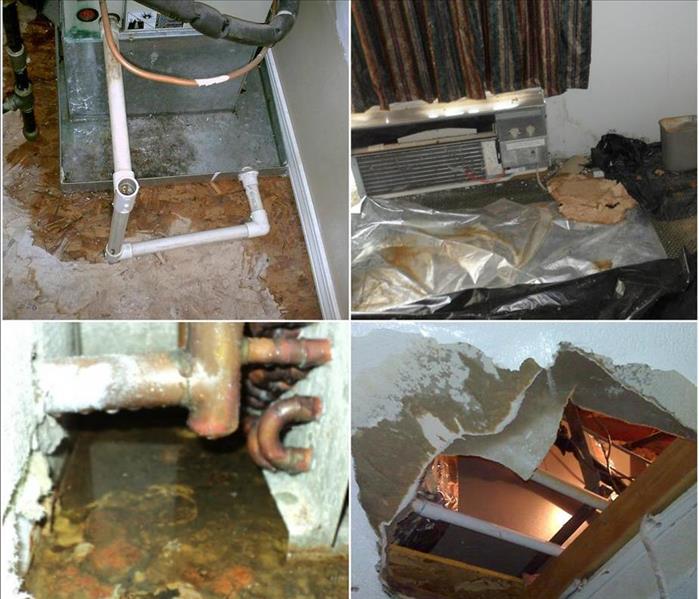Tips for Preventing Air Conditioner Water Damage
4/17/2017 (Permalink)
Summer is right around the corner and that means 100-degree weather if you live in Texas and air conditions running all day and night. While most people enjoy keeping their home or business cool and comfortable indoors throughout summer they don’t realize that air conditioners can sometimes cause a water damage if not properly maintained.
Did you know an air conditioning system can collect 10 to 20 gallons of water daily when working at peak efficiency? Normally the water will drain off the condensation coil into a collection pan and then is disposed of automatically into the sewer system but if the drain becomes clogged and the unit produces more water than it can handle, the water will overflow and can lead to damaged floors and carpeting. If not noticed it can also cause mold growth.
Although a clogged drain line is often the major source of creating water damage there are other causes such as excessive condensation that occurs when the unit is running round the clock in addition to evaporator coils that may freeze up and then defrost on a regular basis. Because most of the unit is typically hidden from view water damage can be occurring daily and accumulating into hundreds of dollars’ worth of damage.
1.Make sure to change the air filter every month. By changing the air filter monthly, it gives you the opportunity to check whether there is excessive moisture collecting on the condensation line. Making sure that the AC unit has clean air filters also helps prevent the unit from overworking and causing freezing and then defrosting on the evaporator coils, leading to water damage.
2. It is important to regularly check to see that water is indeed flowing from the opening of the condensation line directly to the drain as it was designed to do, especially during periods of very high humidity in the atmosphere.
3. When installing an AC condensation line, avoid using elbow connections if possible and have the line run in as straight an up and down direction as possible to facilitate water removal from the unit.
4. Consider having a professional air conditioning repair service to clean the condensation line at least once a year or every six months if the AC system is used on a year-round basis. A professional plumbing service can also install a condensation pump to help ensure the free flow of excess water into the proper disposal drain. A repair technician may recommend installing a device known as a safety float switch which will automatically shut down the power to an AC unit whenever condensation builds up and there is a danger of water overflow.
By following the four steps listed, you can help reduce the chances of water damage. If a water damage does occur SERVPRO of North Richland Hills is ready to help get your home or business dry. Call us at 817-589-1499 or go to our website at www.SERVPROnorthrichlandhills.com





 24/7 Emergency Service
24/7 Emergency Service
